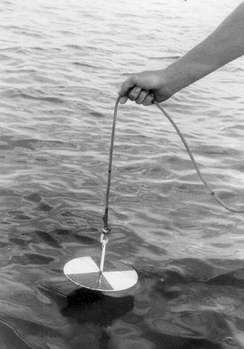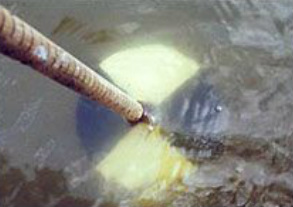Water Clarity Monitoring in The Great Lakes – Secchi Disk Readings
Boating for Science
|
What?
We are asking boaters, paddlers, rowers, and anyone else in the Great Lakes to collect data for us using a Secchi Disk. The turbidity of a body of water is related to the cleanliness of the water. Waters with low concentrations of total suspended solids (TSS) are clearer and less turbid than those with high TSS concentrations. Turbidity can be caused by high concentrations of biota such as phytoplankton, or by loading of abiotic matter such as sediments. Turbidity is important in aquatic systems as it can alter light intensities through the water column, thus potentially affecting rates of photosynthesis and the distribution of organisms within the water column. Lowered rates of photosynthesis may in turn affect the levels of dissolved oxygen available in a given body of water, thus affecting larger populations such as fish. High turbidity can also cause infilling of lakes and ponds if the suspended sediments settle out of the water column and are deposited. Who will use this information?
Val Klump, School of Freshwater Sciences UW Milwaukee/Senior Scientist and Director Great Lakes WATER Institute Where?
The Great Lakes Region What can you do?
Turbidity can be measured using several methods. The easiest and least expensive method is through the employment of a Secchi disk. A Secchi disk is an 8-inch diameter disk with alternating black and white quadrants that is lowered into the water column until it can no longer be seen from the surface. The point at which the disk disappears is a function of the lake turbidity. A turbidity tube, or T-tube, can be used as an alternative to lowering a Secchi disk through the water column. The T-tube is a plastic tube with a small-scale Secchi disk pattern at its base. Water samples can be poured into the tube and the clarity of the bottom disk can be used to reveal turbidity. Turbidity can also be measured using higher tech instruments |
How will this data be used?
This data will help scientists gain a better understanding of water clarity in the Great Lakes, which is highly variable even within each lake. This data will help scientists understand why water clarity varies so dramatically, and what effect this has on overall water quality in the region. It will also contribute to understanding physical, chemical and biological processes in large lake systems. |


